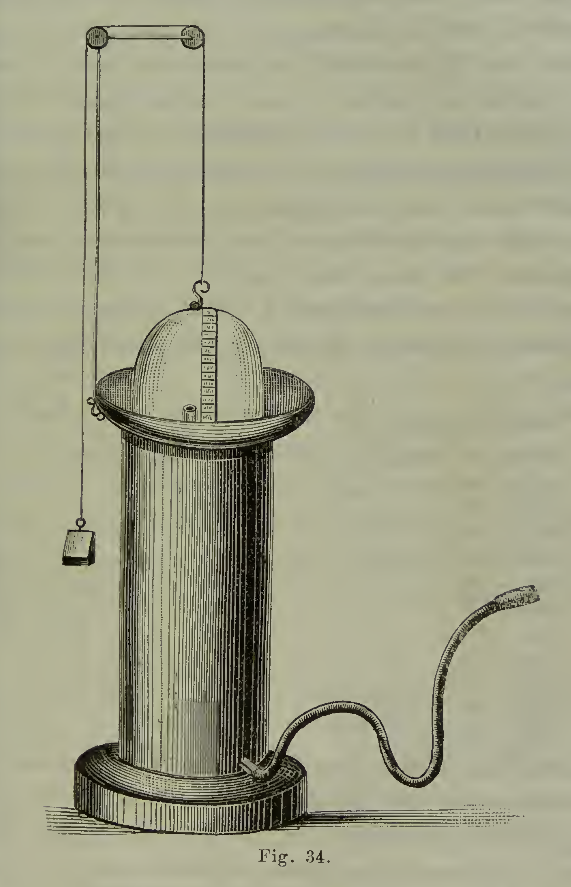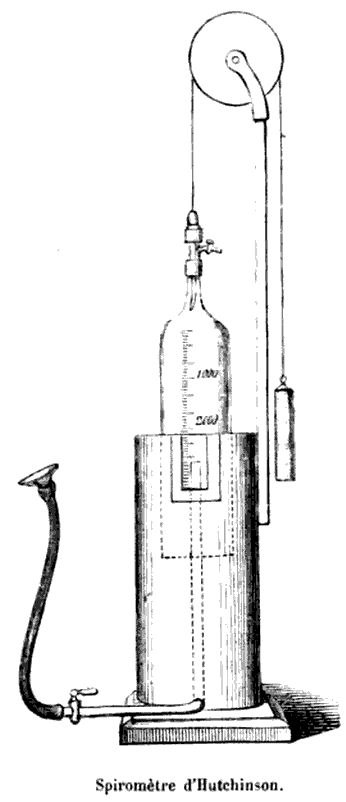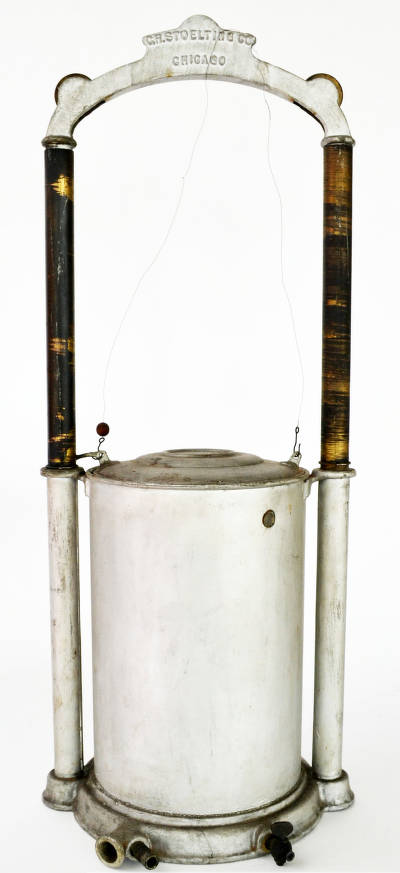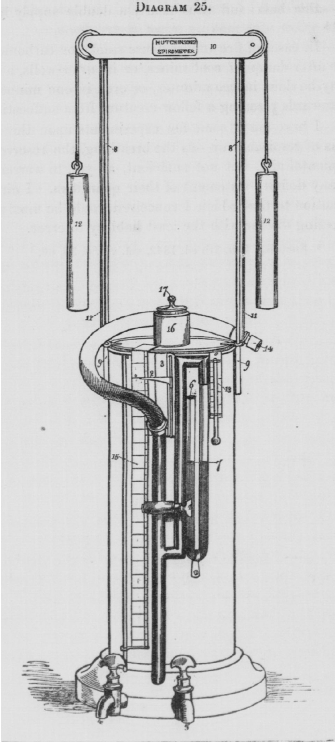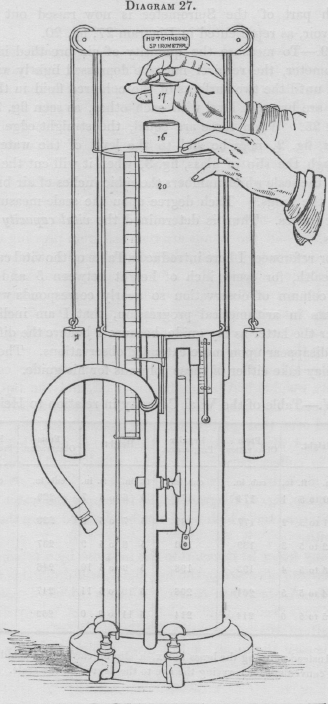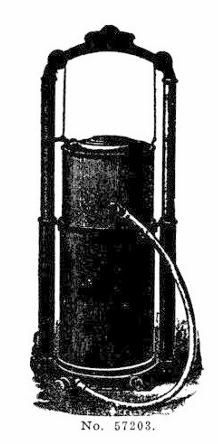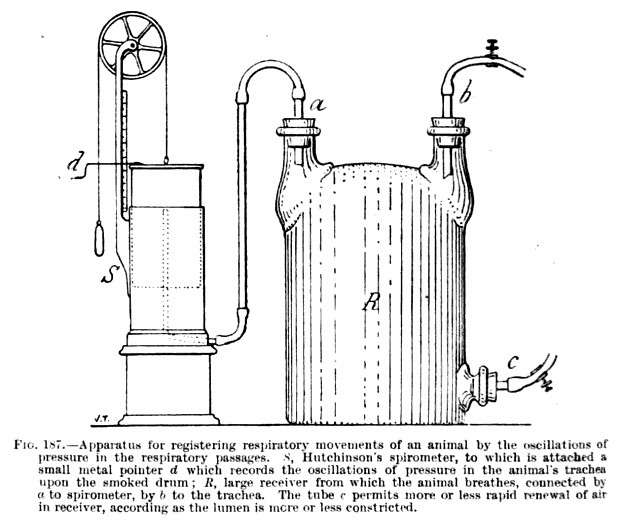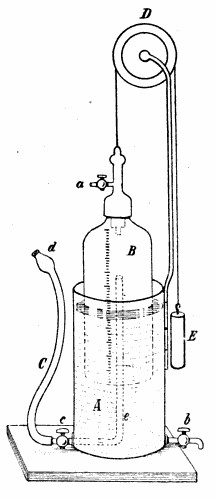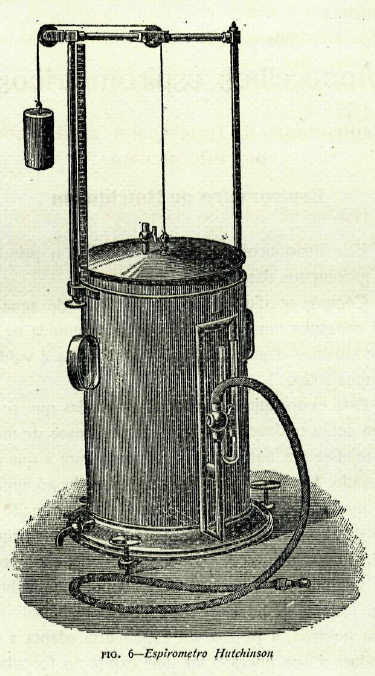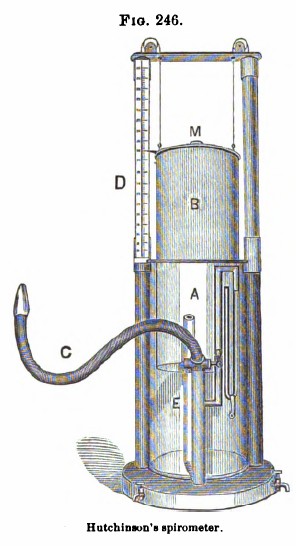
From Treatise on human physiology by Henry Cadwalader Chapman, Published by Lea Brothers & Co, 1887, page 430.
“The instrument described by Hutchinson, and somewhat modified by Hawksley for the author, consists (Fig. 246) essentially of a cylindrical vessel (A), with a capacity of about 7.5 liters (2 gal.), containing water, out of which a receiver (B) can be elevated and depressed by breathing into it through a tube (C), and then the height to which the receiver is elevated and depressed, as shown by the scale D indicating the volume of air expired and inspired. In using the spirometer, it should be placed upon a firm, level table, about three feet from the ground. The water tap then having been turned off, and the air tap opened, clear, cold water is poured through the spout of the cylindrical vessel A, until it is full, any excess of water running off by the tap in communication with the air tube. Enough colored spirit is poured into the U-shaped tube, until it stands about 3.5 inches. The counterpoising weights being then suspended within the framework M, and over the pulleys, and the air tap closed, the instrument is ready for an observation. The person whose breath capacity is to be determined standing erect with head through backward, and loosely attired, applied by the mouth-piece the flexible tube C to his mouth and expires into the spirometer. The air from his lungs passes thence into tube E, elevating the receiver B, by the volume of air expired, expressed in cubic inches, being shown bu the number of the scale to which the index connected with the receiver has been elevated. At the termination of the expiratory effort, the air-tap must be closed.
